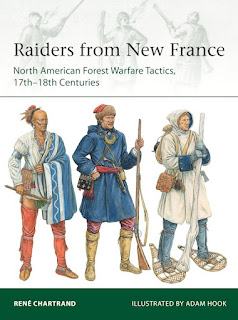Nippes ( pronounced knee-pay) are possibly the least known or understood piece of equipment essential to the historical milicean.
Nippes are foot wraps made to be stuffed into moccicans in the winter. It appears to be a practice adopted by Canadians from Indigenous techniques.
Interestingly, there is a modern equivalent from the soviet army of the 20th century; portyanki. I’ve been unable to find another culture or military group in any era using foot wraps like this. So, without knowing the form that nippes took in the 18th century, I’ve chosen to extrapolate how nippes may have been used using the example of Soviet portyanki.
Pictured below is a Soviet era explanation of how to wrap portyanki.
François-Charles de Bourlamaque, the colonial and third in charge of French regular troops during the French and Indian war, issued:
“1/2 aune of cradle blanket for moccasin liners”.
Bourlamaque issued nippes along with 2 pairs of chassons which are wool slippers to be used as moccian liners. Some officers of the time period also issued nippes only, others seemed to issue chaussons only. At least two I know of, Bourlamaque and François Bigot specify nippes to be made from cradle blankets.
Bigot gives his soldiers “1 cradle blanket for nippes to put in the shoes” which in my estimation is enough for two pairs of nippes.
Going by Bourlamaque’s list we get one half aune of cradle blanket, probably for just one pair.
According to dictionary.com the word Aune is, “an old French unit of measure for fabrics, equivalent to about 47 inches (119 centimeters).”
So 1/2 aune is about 23.5 inches.
That is 23.5 inches of “cradle blanket.”
HBChearitage.ca defines the range of blankets “for children’s cribs” in an early 20th century advertisement pictured below. In descending size order they are 2 1/2 points down to 1 point. The attached article seems to imply that the HBC sizes listed are consistant with ones from France in the mid 18th century and I’ve been unable to find another source for the size of cradle blankets as they relate to the 18th century in New France.
I’m assuming that the French army was issuing one point blankets as cradle blankets to be cut in half and issued to each man. I think this because it is the smallest, and thus cheapest, size. So my modern recreation here is an example of the smallest size for nippes.
The HBC measures a one point blanket as 32 inches wide by 46 inches long.
So, about 23.5 inches by 32 inches for the total amount of fabric given to each person in my estimation.
Which, would be one cradle blanket cut in half horizontally, because, one cradle blanket is about 1 aune long and 32 inches wide. That’s the total cloth issued to each soldier.
A modern recreation of the size of one, one point, cradle blanket.
If you fold your 1/2 aune of cradle blanket length wise you get two pieces that are 12 inches by 32 inches wide.
Folded width wise you get two pieces that are 16 inches by 23 inches.
So to my mind you can make your nippes one of two ways.
I haven’t yet tested each size of nippes in the field but each size seems to give an equivalent amount of coverage once wrapped around the foot to me. Pictured below are my two feet, one wrapped in each size.
When I use moccicans in the winter I generally wear wool stockings with a pair or two of chaussons then wrap my feet in nippes and my feet have stayed warm and even dry!
Although my treatment of nippes is largely speculative and includes cross cultural analysis to fill in the blind spots, I’m confident that historical nippes would have taken a very similar form to what I’ve described.
I’ve found nippes to be a very practical winter foot wrap, they can be dried quickly because it’s a simple piece of fabric, they stay tightly wrapped within the moccican, don’t chafe, and if the part of the nippe you’ve used for the bottom of your foot is wet you can re wrap it to have that part dry on the bottom of your foot.
I would encourage you to safely experiment with nippes and winter moccicans!
The lists of issued items from the 18th century I used were from The Equipment of New France Militia 1740-1760, by Steve Delisle and Mémoire Pour Messire François Bigot, ci-devant Intendant de Justice, Police, Finance & Marine en Canada, Accusé: Contre Monsieur le Procureur-Général du Roi en la Commission, Accusateur: Contenant l'Histoire de l'Administration du sieur Bigot dans la Colonie, & des Réfléxions générales sur cettes Administration, Volume 1 (Paris: P. Al. Le Prieur, 1763) 39-40.)










